You know that moment when you’re eagerly waiting for your pizza, and when it finally arrives, you notice that the slices are uneven, and there’s a suspicious bit of green pepper on your “plain cheese” order?
That’s when I started wondering, “What is clean-cut pizza?” and how can it make my pizza experience better.
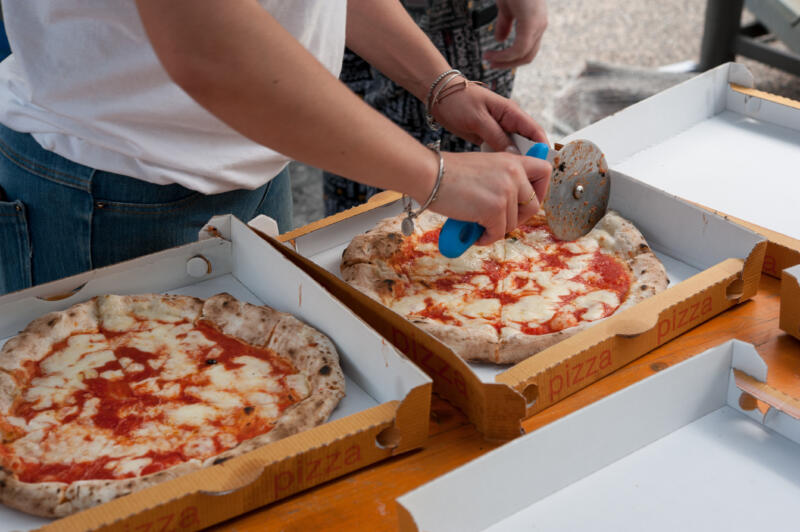
While requesting a clean cut pizza might seem like a minor detail to some, for others, it’s a matter of serious concern, especially for those with food allergies or religious dietary restrictions.
This article is a deep dive into the world of clean-cut pizza, exploring everything from its definition to its benefits, the tools used, and how different pizza chains approach this practice.
In this article:
Definition
Clean cut pizza, as the name suggests, is a pizza that has been sliced with a fresh utensil, free from any remnants of previous pizzas.
This differs from the typical pizza cut, where the same pizza cutter is used repeatedly without being cleaned in between.
The concept of a clean cut pizza is rooted in the avoidance of cross-contamination, ensuring that each pizza is cut with a fresh utensil.
Benefits
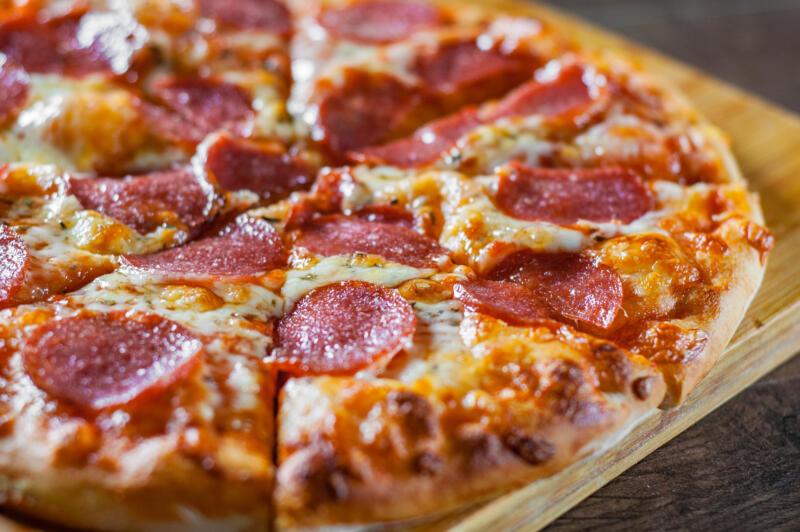
The primary benefit of clean cut pizza is the prevention of cross-contamination.
By using a fresh utensil for each pizza, you eliminate the risk of transferring unwanted ingredients, making it a safer option for people with food allergies, religious dietary restrictions, or hygiene concerns.
There are several types of pizza cuts, including:
- classic triangle,
- square or party cut,
- strips.
Regardless of the type of cut, a clean cut can be achieved using different tools, such as the rocker blade and the pizza wheel.
Pizza Cutting Tools
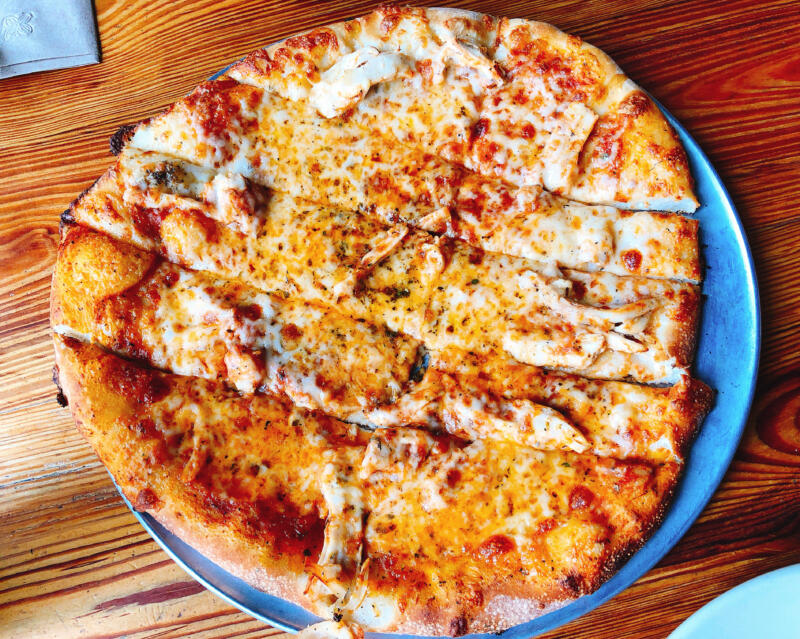
Before we delve into the specifics of pizza cutting tools, let’s take a moment to appreciate the art of pizza cutting itself.
The way a pizza is cut can significantly impact the eating experience, and different cuts cater to different preferences and occasions.
Rocker Blade
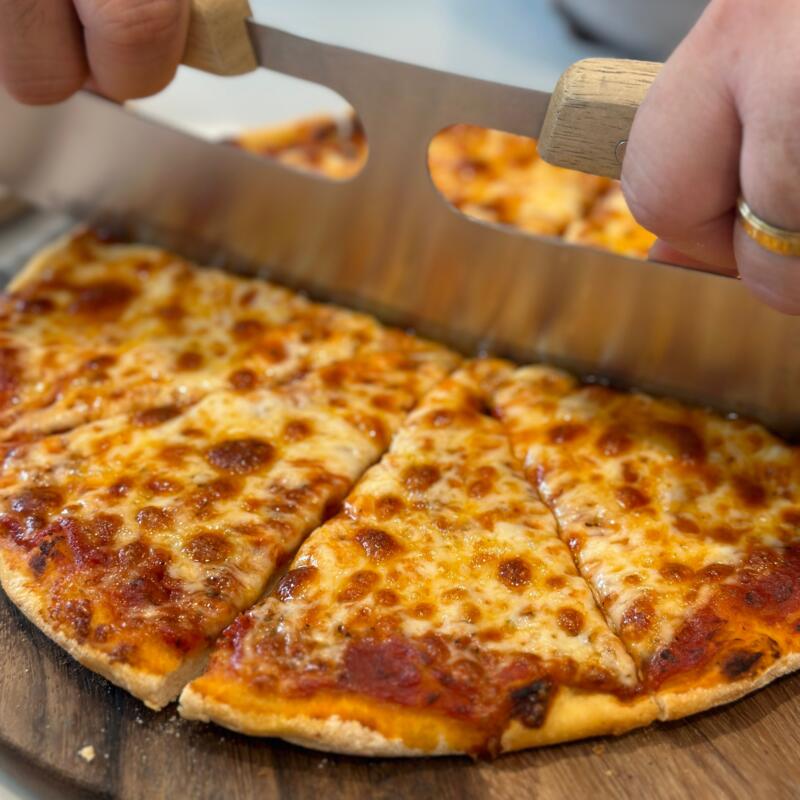
The rocker blade is a unique alternative to the traditional pizza wheel. Shaped like a half-moon, this cutter is rocked back and forth to cut through the pizza.
One of the main benefits of the rocker blade is its ability to cut through thick crusts and heavy toppings with ease.
However, it does have its drawbacks, such as requiring more storage space due to its larger size.
Popular brands of rocker blade cutters include The Ultimate Pizza Cutter and Chef’s Knife.
These brands are known for their quality and durability, making them a favorite among pizza enthusiasts.
Despite its many advantages, the rocker blade does pose some challenges when it comes to storage.
Its large size and sharp blade make it a bit more difficult to store safely compared to the compact pizza wheel. However, with the right storage solutions, these challenges can be easily overcome.
Pizza Wheel
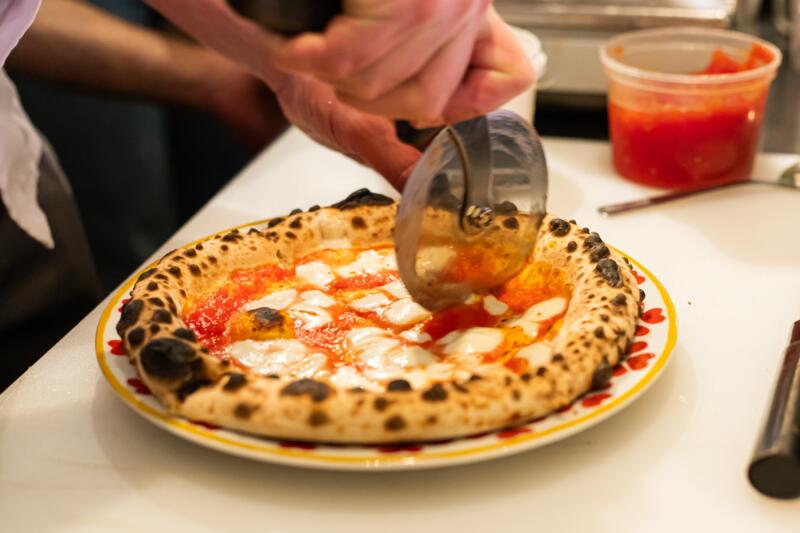
The pizza wheel, also known as a pizza cutter, is a staple in the world of pizza making. Its popularity stems from its ease of use and the clean cuts it can produce.
The pizza wheel is designed with a sharp, circular blade that rolls across the pizza, slicing it into perfect pieces with minimal effort.
One of the most popular pizza wheels on the market is the Kitchy Pizza Cutter Wheel.
This cutter is known for its ergonomic design, sharp blade, and protective blade guard, making it both safe and efficient.
However, like all tools, it has its cons. Some users find that the wheel can get stuck in thick crusts or heavy toppings.
On the bright side, the Kitchy Pizza Cutter Wheel can be easily cleaned in the dishwasher, simplifying the cleanup process.
What About the Pizza Peel?
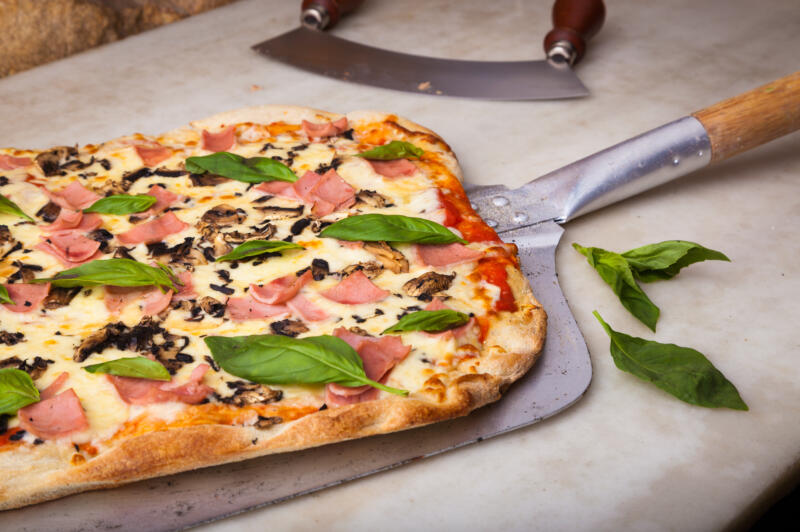
Moving on from cutting tools, let’s talk about the pizza peel. This paddle-style tool is an essential part of the pizza-making process.
It slides between the uncooked pizza dough and the cooking surface, allowing to easily maneuver the pizza into and out of the oven.
Pizza peels come into contact with both raw and cooked food, so using the same peel for both without proper cleaning in between can potentially lead to cross-contamination.
No-Cut Pizza
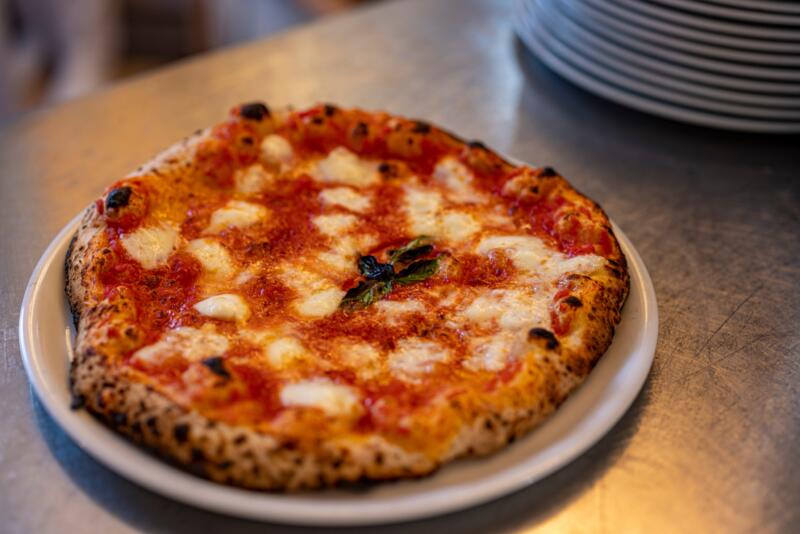
The concept of a no-cut pizza might seem unusual, but it offers several benefits.
By not cutting the pizza, you prevent cross-contamination from the cutter, ensuring that each pizza is free from unwanted ingredients.
Choosing not to slice your pizza can actually enhance your dining experience in several ways. Firstly, leaving the pizza uncut helps to maintain the integrity of the crust, keeping it crunchier for longer.
The crust acts as a barrier, preventing the moisture from the toppings from making it soggy.
Secondly, not cutting the pizza can also reduce the amount of oil that seeps out.
This means less oil in your pizza box or on your plate, leading to a cleaner and more enjoyable pizza experience.
So, the next time you’re served a whole pizza, consider savoring it slice by slice, cutting as you go, to enjoy these benefits.
Standard Practice for Clean Cutting Pizza
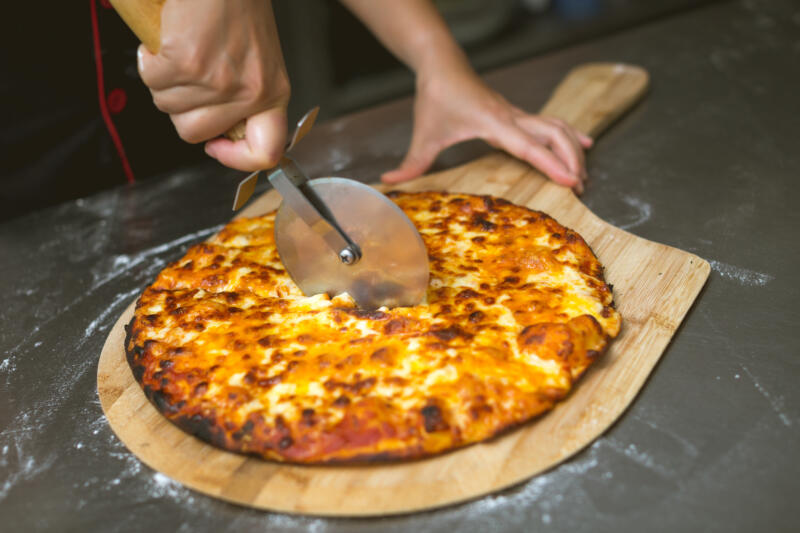
In the hustle and bustle of a busy pizzeria during peak hours, ensuring a clean cut for each pizza can be a challenge.
However, it’s not just pizzerias where clean-cut pizza matters. Even when making homemade pizza, the same principles apply.
Ensuring a clean cut for your homemade pizza can significantly enhance your dining experience and prevent cross-contamination, especially when catering to different dietary preferences within your household.
Sharp Blade Requirements
A sharp blade is crucial for achieving a clean cut pizza. A dull blade can cause the pizza to slide or mash, potentially contaminating it with residue on the surface.
On the other hand, a sharp blade ensures that the cut is precise and clean, preserving the integrity of the pizza and preventing the spread of ingredients that people may be allergic to.
Cross-Contamination Prevention
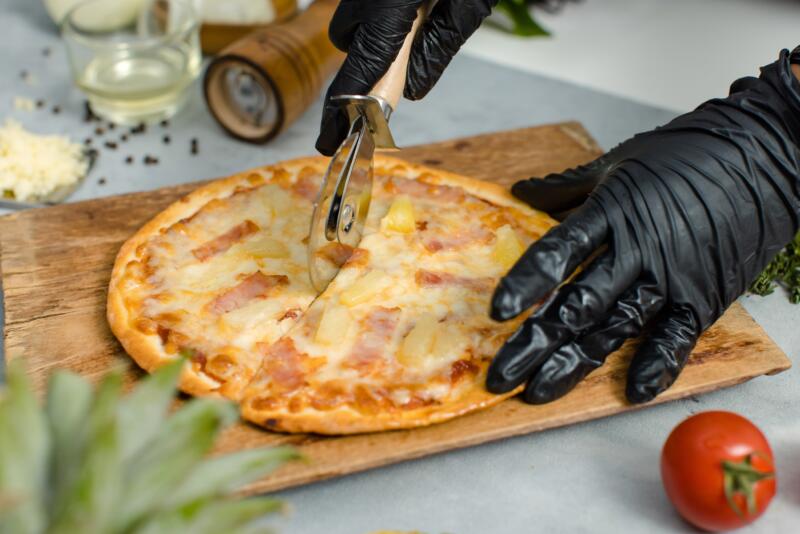
Cross-contamination in pizza making refers to the transfer of allergens or unwanted ingredients from one pizza to another, usually through the pizza cutter.
Cross-contamination prevention requires diligence and a commitment to food safety and involves several practices.
1. Using Different Pizza Cutters for Different Types of Pizzas
This method involves having separate pizza cutters for different types of pizzas.
For instance, one cutter could be used exclusively for meat pizzas, another for vegetarian pizzas, and another for gluten-free pizzas.
This segregation helps prevent cross-contamination between different types of pizzas.
2. Cleaning Equipment Between Pizzas
This practice emphasizes the meticulous cleaning of pizza cutters, pizza peels, and other utensils after each use, ensuring that all equipment is free from remnants of the previous pizza before being employed for the next one.
This is crucial to avoid cross-contamination, especially for customers with severe food allergies.
Utilizing a contaminated pizza peel to transfer the pizza or slicing with a dirty cutter can inadvertently expose customers to allergens.
For instance, if a pizza with seafood toppings is handled or cut and the utensils aren’t properly cleaned before being used on the next pizza, a person with a seafood allergy could experience an allergic reaction to the second pizza, even if it doesn’t contain any seafood toppings.
Therefore, a strict routine of cleaning all utensils and surfaces between pizzas is pivotal in maintaining a safe and allergen-free environment for all customers.
3. Hand Sanitising and Wearing Gloves
Additionally, pizza makers should sanitize their hands frequently and wear gloves when handling food to further minimize the risk of cross-contamination.
Personal Preference Considerations
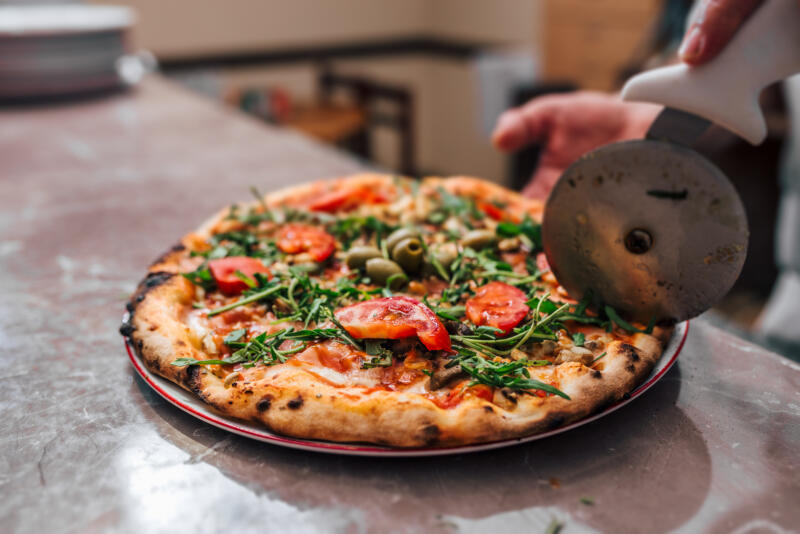
When making food choices, customers should consider the risk of cross-contamination and the importance of adhering to their personal beliefs.
Personal preferences can stem from dietary restrictions, hygiene concerns, or simply a general preference for clean food.
By understanding and respecting these preferences, pizza makers can provide a safer and more enjoyable dining experience for all.
Food Allergies
When it comes to dietary restrictions and food allergies, clean-cut pizza can be a game-changer.
Common food allergens and dietary restrictions that require special attention in pizza making include gluten intolerance, tomato allergies, lactose intolerance, mushroom, and seafood allergies.
For instance, a person with gluten intolerance would need to ensure that their gluten-free pizza is not only made with gluten-free ingredients but also cut with a clean, uncontaminated tool.
This is where clean-cut pizza comes into play, providing a safer dining experience for those with dietary restrictions or food allergies.
Religious Reasons
While some pizzerias may take allergy concerns seriously, they might not pay the same attention to requests made for religious reasons.
Certain religions have strict dietary laws that forbid the consumption of specific foods.
Cross-contamination with these forbidden foods can make a pizza unsuitable for followers of these religious practices.
For example, in Judaism, the dietary law of kashrut prohibits the mixing of dairy and meat.
Therefore, a pizza cutter used on a meat pizza cannot be used on a cheese pizza.
Similarly, in Islam, pork is forbidden, so a pizza cutter used on a pepperoni pizza cannot be used on a pizza intended for a Muslim customer.
Clean-cut pizza practices can ensure that these religious dietary laws are respected.
Requesting a Clean-Cut Pizza
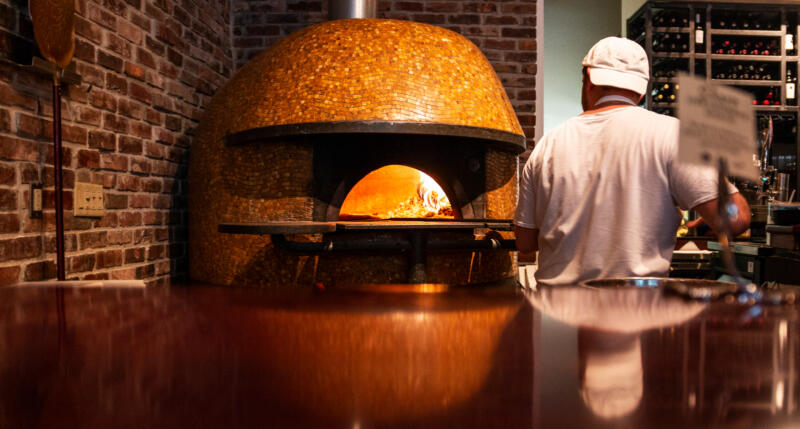
Regardless of the restaurant’s practices, the key to getting a clean cut pizza is clear communication.
When ordering, it’s crucial to explain your needs and why a clean cut is necessary, especially if you have dietary restrictions or allergies.
So, when you order, make sure to ask for a ‘clean-cut’ pizza. This means that they should use a clean cutter that hasn’t been used on other pizzas.
Specify that this is a very important issue for you.
To ensure the waiter or another type of pizzeria employee has understood your request, you can ask them to repeat it back to you. You could say: “Could you please repeat back my request to make sure I’ve made it clear?”
If they correctly repeat your request, you can be confident they’ve understood.
If not, you can clarify your needs again.
Remember, it’s important to be clear and assertive about your dietary needs to ensure your food is prepared safely.
This way, you can enjoy your pizza safely, without worrying about cross-contamination.
Different Restaurants and Their Practices for Clean Cut Pizza
As we delve into the world of clean-cut pizza, it’s interesting to note how different pizza chains approach this practice.
Let’s take a look at a popular pizza chain, Papa John’s, and their approach to clean-cut pizza.
Papa John’s
Papa John’s, a well-known pizza chain, has its unique approach to clean-cut pizza.
They recognize the importance of accommodating customers with dietary needs, food allergies, and religious dietary guidelines.
While the specifics of their clean-cut pizza practices may vary by location, they generally strive to minimize cross-contamination and accommodate customer requests for clean cuts.
Other Pizza Chains
Mode Pizza, Blaze Pizza, Domino’s, Little Caesar’s Pizza, Marco’s Pizza, Flatbread Company are known for their allergy-friendly practices, which often include clean-cut pizza.
However, it’s always a good idea to specify your needs when ordering.
Closing Thoughts
The benefits of clean-cut pizza are numerous, from catering to dietary needs and religious practices to simply providing a cleaner, more hygienic pizza experience.
As more people become aware of these benefits, the clean-cut pizza trend is likely to grow.
Whether you’re a pizza enthusiast or someone with specific dietary needs, we encourage you to try clean-cut pizza and experience the difference for yourself.
If you have any questions or comments, or if you’d like to share your own experiences with clean-cut pizza, please feel free to use the comments section below.
We’d love to hear from you!